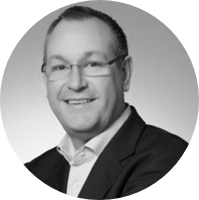Marching against the grain of traditional R&D to deliver on the promise of precision medicine
Meeting the needs of future generations requires all of us to be at our best.
For many years, personalised medicine; treatment that ‘hit its target’ was touted as the next revolution in medical science.
While traditional R&D had its place, science was progressing to deliver better outcomes for patients.
As knowledge and science has progressed furthermore, the next chapter, the broader notion of precision medicine – which stretches beyond targeted treatment to include diagnostics, companion and preventative approaches as well – is even more exciting.
It’s a powerful cutting edge concept. Diagnosing and treating patients or preventing disease based on a person’s genetic biomarkers.
Like our approach to science at Janssen, it’s brave and bold.
It’s hugely individual, personalised and accurate on the one hand.
But expensive, and logistically and scientifically challenging on the other.
But at Janssen, we’re proud to march against the grain of traditional R&D and explore the possibilities of precision medicine in our relentless quest to treat, intercept, prevent and cure disease.
I’ve often likened precision medicine to taking off a blindfold we’ve been forced to wear in medical science for so long. Seeing targets more clearly; identifying those patients that will benefit, and realising as a result a much higher chance of success.
And so far, so good. As treatments in the space are slowly introduced to countries across the world, patients are ultimately benefiting.
To date, we’ve seen the impact most powerfully in the oncology space. A 2015 study by the Tufts Centre for Drug Development found around 35 per cent of oncology treatments are precision medicines, and almost three quarters, 73 per cent, in development, fall into this category.
At Janssen, we are on the cusp of yet further advance in cell therapies like CAR-T, which involves reprogramming someone’s own cells to more effectively fight blood cancers, like leukaemia. With one therapy in this field already approved in Australia for use, we are also increasing lab capabilities to meet growing demand.
Beyond oncology progress is a little slower. But while only around 13 per cent of treatments across every therapy area can be considered as precision medicines, 42 per cent of those in development could be.
It’s a huge paradigm shift. But like any true revolution, in the world of medical science and beyond – making precision medicine a medical mainstay that goes against the grain of traditional R&D is not easily achieved, nor is it without challenge – risk and cost to name just two.
But no one ever said revolution was easy. And we recognise that to truly succeed and gain broad momentum and regulatory endorsement, this ground-breaking science requires collaboration from industry, policy makers, payors and pioneers to ensure the promise is routinely delivered upon and that the masterstroke of precision medicine becomes a mainstay within the medical landscape.
Health systems the world over are continually driven by needs for improved outcomes with value for money. And we take responsibility for playing our role in ensuring innovative and high cost therapies are used for the right people.
Most importantly, these advances are being driven by expectations of our patients. They want, need and expect better products to live longer, healthier lives.
We only need to look to our counterparts in the United States to see what is waiting for us – and perhaps some lessons we should be taking on board.
In mid-2017, the Food and Drug Administration (FDA) recently granted accelerated approval for an immunotherapy for patients with solid tumours that have a particular biomarker indicating disrupted ability of cells to repair DNA.
This approval was significant because it was the first for a cancer treatment based on a tumour’s specific genetic features rather than its location in the body.
This “site-agnostic” indication approval signals a real shift to the way precision medicines will be evaluated in the future and sets a precedent the world over for what’s truly possible in this space.
There are certainly some lessons for us to draw in the Asia Pacific region from this development.
For industry shrinking patient populations from the routine R&D broad spectrum approach presents a significant challenge for therapy development in a traditional sense.
But with the wave of Precision Medicine coming, we are heeding the call to treat, intercept, prevent and cure.
We are committed to collaboration, as we recognise the need to work in partnership across the sector to accommodate less traditional evidence approaches and develop methodologies to balance the associated risk associated with attributing value for money.
We are relentless in our pursuit to fighting sickness with science and improving access with ingenuity.
And we are pragmatic in our approach to research to ensure what works in our labs also works in patients’ lives.
It’s all part of our promise to heed the call in the advancement of how medicines are made and made accessible around the world so that our patients can reap the ultimate reward. Health.



